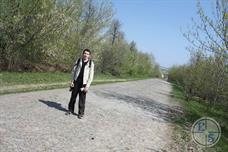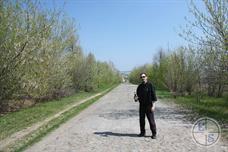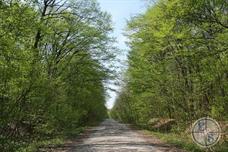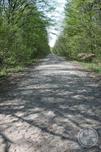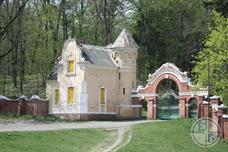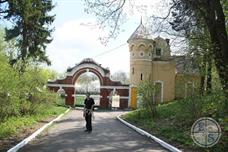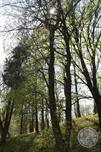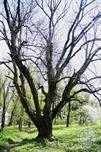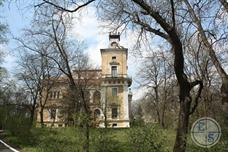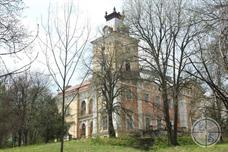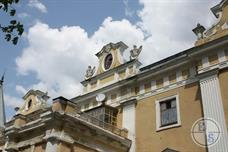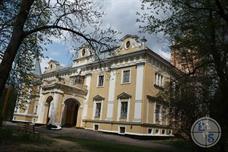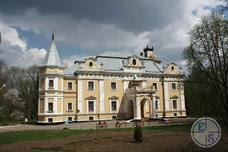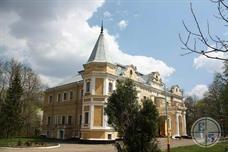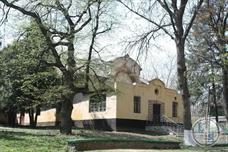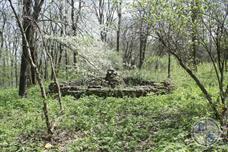Verkhovka
Verkhovka, 2010 г.
Settlement Verkhovka on Bratslav was founded in XV century., During the Khmelnytsky it was fortified fortifications.
In the XVIII century. Verkhovka received the status of town. V1790, in verkhovka owned by Count Stanislaw Potocki, 212 were Christian and 33 Jewish court. Foresaw the decline of the village cunning Potocki sold unpromising village with all peyzane Sobanskomu landlord.
With the seal in the 1870s. Railway, held at a distance from verkhovka, the economic importance of the trade and craft village significantly decreased, and gradually retrained Verkhovka in ordinary village.
In the XVIII century. Verkhovka received the status of town. V1790, in verkhovka owned by Count Stanislaw Potocki, 212 were Christian and 33 Jewish court. Foresaw the decline of the village cunning Potocki sold unpromising village with all peyzane Sobanskomu landlord.
With the seal in the 1870s. Railway, held at a distance from verkhovka, the economic importance of the trade and craft village significantly decreased, and gradually retrained Verkhovka in ordinary village.
Jews of Verkhovka were initially assigned to the community of the town Snitka. Census 1765 and 1776 years. registered in verkhovka, respectively, 32 and 44 of the Jewish home; 1765g in the census. part of the community, Rabbi Joseph Moszkowicz. In 1776 51 men, 52 women, 10 boys, 11 girls and 1 man workers were recorded in the summary of the census of Jews.
According to the topographical description of the recently annexed to Russia Bratslav povet drawn up in 1799, in the town Verkhovka owned by Count Stanislaw Potocki, large buildings were sduyuschie: wooden manor house with a fruit garden, a wooden church and "wooden Jewish school with two prishkolkami" (ie synagogue has two prayer houses). Town residential development accounted for 212 Christian and 33 Jewish court. Shopping Center verkhovka was Gostiny Dvor. Verkhovskaya Jews were kept apart from the distillery by selling most of vodka in Odessa and Tiraspol, and rented a water mill. The Christian population was employed in the main land by treating women as "mostly recruited from the Jews to wash clothes, carry water and drown them inn."
In 1852. in verkhovka were 38 local and 6 non-resident Jewish artisans. In 1853, according to official figures in the town had a synagogue, its 389 parishioners and rabbis Alter Ladyzhenskii and Avraham Yosef Moldavskiy10. In 1857 there were 415 houses with 2973 inhabitants, including 722 Jews. According to 1871 in 1010 it was verkhovka residents assigned to the trading estate, and 1105 - to agriculture, the total number of buildings - 393. In 1889, the Jewish community as a part of 730 people comprised two synagogues. At the beginning of the XX century in the village there were three synagogues, the Jewish population was 1094 people (32% of the population).
According to the topographical description of the recently annexed to Russia Bratslav povet drawn up in 1799, in the town Verkhovka owned by Count Stanislaw Potocki, large buildings were sduyuschie: wooden manor house with a fruit garden, a wooden church and "wooden Jewish school with two prishkolkami" (ie synagogue has two prayer houses). Town residential development accounted for 212 Christian and 33 Jewish court. Shopping Center verkhovka was Gostiny Dvor. Verkhovskaya Jews were kept apart from the distillery by selling most of vodka in Odessa and Tiraspol, and rented a water mill. The Christian population was employed in the main land by treating women as "mostly recruited from the Jews to wash clothes, carry water and drown them inn."
In 1852. in verkhovka were 38 local and 6 non-resident Jewish artisans. In 1853, according to official figures in the town had a synagogue, its 389 parishioners and rabbis Alter Ladyzhenskii and Avraham Yosef Moldavskiy10. In 1857 there were 415 houses with 2973 inhabitants, including 722 Jews. According to 1871 in 1010 it was verkhovka residents assigned to the trading estate, and 1105 - to agriculture, the total number of buildings - 393. In 1889, the Jewish community as a part of 730 people comprised two synagogues. At the beginning of the XX century in the village there were three synagogues, the Jewish population was 1094 people (32% of the population).
At the beginning of the XX century. almost all of a few commercial establishments in verkhovka - three manufactory, grocery and pharmacy stores - belonged to Jews.
In late 1917 there was a situation in verkhovka close to the pogrom, but due to the aid of forces to prevent violence. In May 1919 one of the peasant bands who took place, organized a massacre in which 40 people were killed, dozens were tortured and abused. Only by paying cash "indemnity" verkhovka Jews were able to escape the massacre.
The correspondent of the newspaper "Der Emes" ( "Truth") reported in 1923 that remains in place 60 - 65 Jewish families, they were mostly women and children.
According to the Jewish Assistance Committee of the inspector, a place was so destroyed, that there was nowhere to place the children's home for orphans, so the orphans were sent to Trostyanets. Under the premise for Jewish schools used the synagogue.
Before World War II in verkhovka lived about thirty Jewish families.
In late 1917 there was a situation in verkhovka close to the pogrom, but due to the aid of forces to prevent violence. In May 1919 one of the peasant bands who took place, organized a massacre in which 40 people were killed, dozens were tortured and abused. Only by paying cash "indemnity" verkhovka Jews were able to escape the massacre.
The correspondent of the newspaper "Der Emes" ( "Truth") reported in 1923 that remains in place 60 - 65 Jewish families, they were mostly women and children.
According to the Jewish Assistance Committee of the inspector, a place was so destroyed, that there was nowhere to place the children's home for orphans, so the orphans were sent to Trostyanets. Under the premise for Jewish schools used the synagogue.
Before World War II in verkhovka lived about thirty Jewish families.
During the Second World War Verkhovka was in Transnistria, which was under Romanian control. Community life continued here at this time.
All proper Jewish town were thirty-one-storey houses, surrounded by a large trade area. There was organized the ghetto, where in the summer and autumn of 1941 put the Jews deported from Bessarabia and Bukovina, including several well-known families of Hasidic "Vizhnitsky" dynasty. All deportees were accommodated in the homes of local Jews, resulting in a ghetto was created excessively high population density.
November 7, 1941, on the eve of the Sabbath, on the orders of the occupation authorities was pulled to the base of an old wooden synagogue, Torah scrolls from her Shoikhet saved by transferring them to his home.
By the end of the autumn of 1941 in the ghetto verkhovka were about 1,200 Jews, it was fenced in and out of it is prohibited. Ukrainians were allowed entrance to the ghetto, where they exchanged food things. The head of the community was the Schwartz from Bucharest.
All proper Jewish town were thirty-one-storey houses, surrounded by a large trade area. There was organized the ghetto, where in the summer and autumn of 1941 put the Jews deported from Bessarabia and Bukovina, including several well-known families of Hasidic "Vizhnitsky" dynasty. All deportees were accommodated in the homes of local Jews, resulting in a ghetto was created excessively high population density.
November 7, 1941, on the eve of the Sabbath, on the orders of the occupation authorities was pulled to the base of an old wooden synagogue, Torah scrolls from her Shoikhet saved by transferring them to his home.
By the end of the autumn of 1941 in the ghetto verkhovka were about 1,200 Jews, it was fenced in and out of it is prohibited. Ukrainians were allowed entrance to the ghetto, where they exchanged food things. The head of the community was the Schwartz from Bucharest.
In the winter of 1941/42 in the ghetto an outbreak of typhoid fever, which kills up to twenty or thirty people a day. The dead were buried in a common grave, an exception was made only for Bukovina rabbis buried in individual graves in the old cemetery. The clothes of the dead exchanged at the food of the peasants by means of which support the poorest prisoners. From fever, cold and hunger killed about half of the ghetto population. Only in summer 1943 with the money raised by the Romanian Jews, a public kitchen and a hospital have been organized in the ghetto.
In December 1943, the Germans began to be carried out in verkhovka share extermination of the Jews, but for some unknown reason it was discontinued. In the winter of 1944 to the beginning of the German retreat in the ghetto regime tightened. German soldiers and "Vlasov" retreating through verkhovka, repaired violence on the Jews and robbed them.
With the end of the war deported Bukovina and Bessarabian Jews returned to their homeland. In verkhovka had a few Jewish families in the postwar years.
Since the 1990s, Jews have not lived here
V.Lukin, "100 Jewish settlements in Ukraine"
In December 1943, the Germans began to be carried out in verkhovka share extermination of the Jews, but for some unknown reason it was discontinued. In the winter of 1944 to the beginning of the German retreat in the ghetto regime tightened. German soldiers and "Vlasov" retreating through verkhovka, repaired violence on the Jews and robbed them.
With the end of the war deported Bukovina and Bessarabian Jews returned to their homeland. In verkhovka had a few Jewish families in the postwar years.
Since the 1990s, Jews have not lived here
V.Lukin, "100 Jewish settlements in Ukraine"
Stanislav Sobansky built his palace from 1861 to 1894. The author of the manor in the neo-baroque was the architect Kosarevsky. In 1891 parkostroitelem V.Kronenbergom was founded landscaped park area of 21 hectares, where trees have been gathered from around the world. Both the palace and the park is very well preserved. After the revolution, here staged a stud, which is then moved to Obodovka, and from 1932 to the present day agricultural college located in the estate Sobanskih.
Individual attention, entrance gate, made in the style of neo-baroque and stylized castle tower.
Individual attention, entrance gate, made in the style of neo-baroque and stylized castle tower.
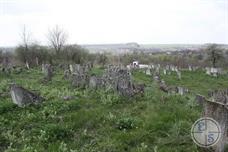 |
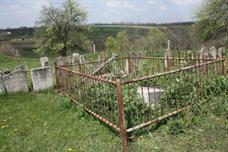 |
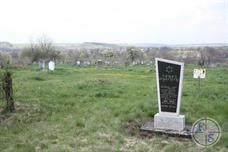 |
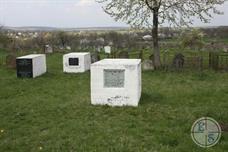 |
| Under such cubes buried rabbis | |||
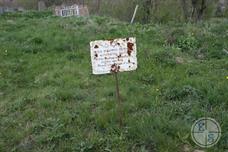 |
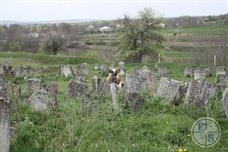 |
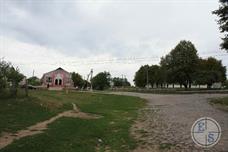 |
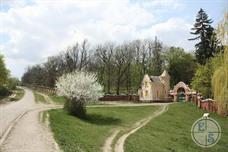 |
| In memory of the Jews of Bessarabia | oday is hard to imagine that at one time it was the center of the bustling town |
Vinnitsa Region

My shtetl
My shtetl
Jewish towns of Ukraine
Jewish towns of Ukraine
